#the maumee river!!!!!!!!!!
Text
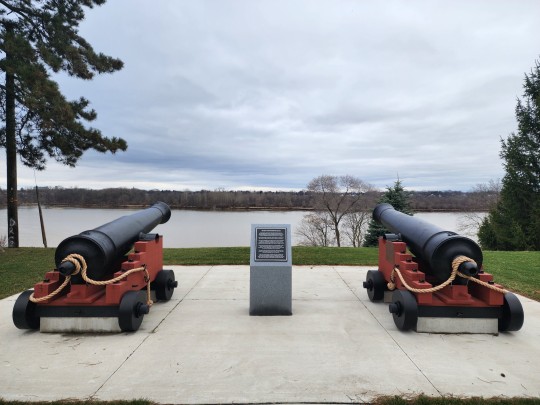



Looking down on the Maumee River from Riverside Park in Perrysburg: which features two replica cannons from USS Constitution, made in 1906 and installed in the park in 1934.
It's an interesting decision to import some War of 1812 history to a place that already has plenty of it. It's an incredible experience to be standing so close to the Maumee, thinking about the battles of Fort Meigs and Fort Miamis—even Fort Wayne, Indiana is on the Maumee River! It's the largest watershed in all the Great Lakes.
#war of 1812#perrysburg#ohio#maumee river#military history#uss constitution#naval artillery#cannons#the 1934 plaque dedicates the cannons to the memory of oliver hazard perry#ohio posting#the maumee river!!!!!!!!!!
15 notes
·
View notes
Photo

On this day, August 20, 1794, an American Indian Alliance and the United States Army, led by General Anthony Wayne, came together at the Battle of Fallen Timbers near present-day Toledo, Ohio. The Battle of Timbers was the last major conflict of the Northwest Territory Indian War between American Indians and the United States. At the battle General Anthony Wayne (1745-96) led U.S. troops to victory over a confederation of Indian warriors whose leaders included Chief Blue Jacket of the Shawnees and Chief Little Turtle of the Miamis. The Treaty of Greenville, signed the following year, opened up much of present-day Ohio to settlers.
President George Washington appointed Major General Anthony Wayne as the commander of the United States Army in the Northwest Territory. Wayne was instructed to reorganize the mostly state-based militia force into a more professional army known as the Legion of the United States. Ostensibly the Legion’s mission was to pacify the American Indian tribes in the Northwest in order to bring to an end the widespread frontier violence and if possible produce a negotiated peace. Wayne’s predecessors, Josiah Harmar and Arthur St. Clair, both suffered significant defeats against American Indian tribes in the Ohio Country, and Washington hoped that Wayne’s aggressive tactics would prove to be more successful. In May 1793, Wayne arrived with additional troops to supplement the Army of the Northwest, and positioned his army at Fort Washington, near present-day Cincinnati. Wayne repeatedly drilled his troops, hoping to avoid the horrific defeats that befell Harmar and St. Clair.
Thirty-three of Wayne’s men were killed and roughly one hundred wounded, while the American Indian Alliance lost approximately twice that number. Blue Jacket's (Shawnee) followers retreated to Fort Miami, hoping the British would provide them with protection and assistance against Wayne's army, however the British refused to let them into the fort. Wayne followed the warriors to the fort. Upon his arrival, Wayne ordered the British to evacuate the Northwest Territory, but the British commander refused, and Wayne decided to withdraw to Fort Greene Ville.
For the next year, Wayne stayed at Fort Greene Ville working to negotiate a treaty with Tribal leaders. The Tribal negotiators and leaders realized they were at a serious disadvantage with the settlers, especially because of Britain's refusal to support them. On August 3, 1795, representatives from the Myaamia, Wyandotte, Shawnee, Lenape, Ottawa, Ojibwa, Potawatomi, Kickapoo, Kaskaskias, Eel River, and Weas signed the Treaty of Greeneville. In signing the treaty, these tribes agreed to move to the northwestern part of what is now the State of Ohio. Championed as a treaty of friendship between American settlers and American Indian tribes the treaty did not subdue tension between American Indians and settlers, and Tribal leaders continued to fight to regain their lost land. Bloodshed dominated the region for the next twenty years as settlers and American Indians struggled for control. In the early 19th century, thousands of American Indian peoples from the Ohio Country and the Great Lakes region joined Tecumseh and his brother Tenskwatawa at Prophetstown, Indiana, where they were building a new Indian Alliance as a united force to stop the sale of Indian land.
The Fallen Timbers Battlefield Memorial Park is a National Historic Landmark and one of the historic sites co-managed by the Ohio History Connection and local officials. Located near the Maumee River, the park includes monuments honoring the warriors and soldiers who perished during the battle - including Major General Anthony Wayne, his soldiers, the American Indian leaders, and many warriors.
24 notes
·
View notes
Text

Industry and Art
Seen in Toledo, Ohio.
1 note
·
View note
Text
Traffic Alert: Anthony Boulevard temporary detour begins Tuesday - 10/11/2022
New Post has been published on https://aroundfortwayne.com/news/2022/10/07/traffic-alert-anthony-boulevard-temporary-detour-begins-tuesday-10-11-2022/
Traffic Alert: Anthony Boulevard temporary detour begins Tuesday - 10/11/2022

On Tuesday, October 11, 2022, the project’s second phase will move into the intersection of East Wayne Street and Anthony Boulevard, closing Anthony between Wayne and East Washington Boulevard.
#Anthony Boulevard#Berry Street#City of Fort Wayne Indiana#Coliseum Boulevard#Fort Wayne City Utilities#Fort Wayne Indiana#Lake Avenue#Maumee Avenue#Maumee River#P. L. Brunner City of Fort Wayne Water Pollution Control Plant#Washington Boulevard#Wayne Street
0 notes
Note
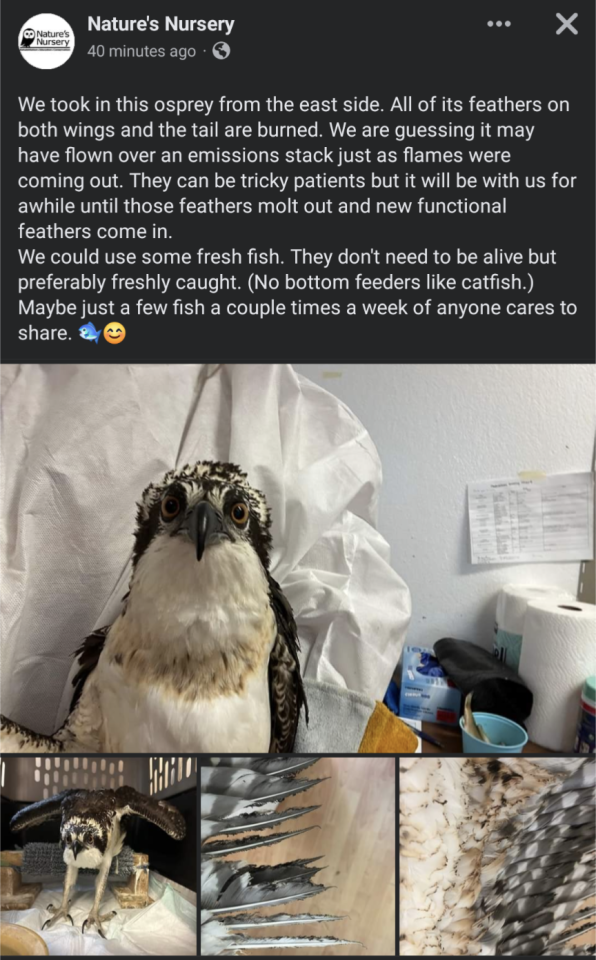

Today's bird is this inconvenienced and angry osprey being rehabbed at a local facility! If you're going fishing in Lake Erie or the Maumee River anytime in the next few weeks you should pop by and share some fresh catches!
ohhhhh little dude!
2K notes
·
View notes
Text
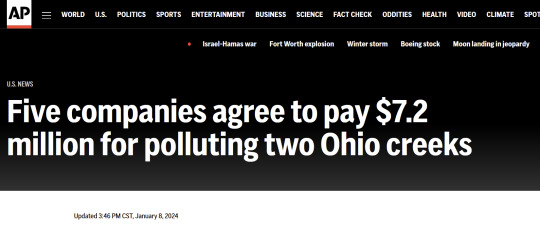
sigh. i'm going to regret looking into this, aren't i?
TOLEDO, Ohio (AP) — Five companies have agreed to pay the federal government more than $7.2 million overall to resolve claims stemming from longstanding pollution in two adjacent creeks in the Maumee River watershed in northwestern Ohio.
The settlement with Ohio Refining Co., Chevron USA, Energy Transfer LLC, Pilkington North America and Chemtrade Logistics was announced Monday by the U.S. Department of Justice. Officials said a federal judge must approve the deal before it takes effect.
According to a complaint, the companies are liable for historic industrial discharges of oil or hazardous substances at the Duck & Otter Creeks site near Toledo. The site is just east of the Maumee River and encompasses the creeks, adjoining wetlands, floodplain areas and uplands.
The two creeks flow into Maumee Bay in Lake Erie and provide key habitats for migratory birds and fish, and also support hunting and fishing activities for local residents, according to federal wildlife officials.
so before i do anything else, let me establish: when the AP says "near Toledo" they mean basically right in the middle of Toledo, Ohio (pop. 268,000~)

anyway, the AP article doesn't really elaborate on this, but we're talking pollution involving oil and discharge of cancer-causing polycyclic hydrocarbons (PAHs), arsenic and lead. cancer rates in this part of Ohio are relatively high, especially in neighboring Ottawa County. as a whole, cancer rates in Ohio have been on a steady incline over the last 2 decades.

back to the price being paid by these five companies highlighted above in red. that's really what i wanted to focus on here, because as we know, fines aren't actual enforcement of the law or justice. it is a cost of doing business for most companies.
so what is the true cost and how much are these energy companies gonna feel the impact to their bottom line?
Ohio Refining Co took some digging to find. according to this EPA documentation, it turns out that the parent company for Ohio Refining Co is - surprise! - BP-Husky Refining LLC. yes, that BP! in case you needed the reminder, they made $80.431 billion over the last 12 months.
we all know about Chevron. i mean fuck, they have an entire "Criticism of Chevron" wikipedia page dedicated to their bullshit. so i'll just throw out the numbers for this soul sucking corporation: $36.5 billion in profit for 2022.
next up we have Energy Transfer LLC. wait a second.... where do i know that name? oh yeah.

and they take home about $78.555 billion in revenue annually.
as it turns out, Pilkington North America is actually a subsidiary of a Japanese company - Nippon Sheet Glass. if my math is right, their annual revenue is around $5 billion USD.
lastly we have Chemtrade Logistics - a relative small fry - who boasts an annual revenue of $1.88 billion.
in case you weren't keeping up at home, these five companies have a combined annual revenue of $202 billion. their fine is $7.2 million.
with an annual revenue of $202 billion, that would mean that these five companies are making an average of $553 million every single day. this isn't even a drop in the bucket. this is barely 1% of one day's earnings for these companies. and at what cost to human health and safety?
#fuck capitalism#anti capitalist#anti capitalism#us news#environmentalism#ohio#ohio news#toledo ohio
82 notes
·
View notes
Text
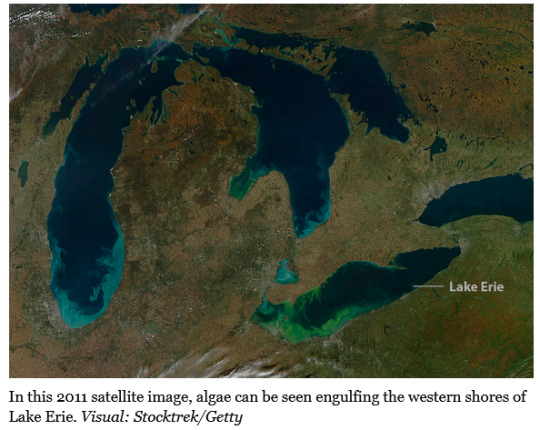

On Saturday, August 2, 2014, the water supply for the city of Toledo, Ohio, was poisoned. Officials issued an unequivocal order to the half million residents connected to the municipal intake: Don’t drink, cook, or brush your teeth with the water. [...] Stores ran out of bottled water, leaving residents to queue up at local fire stations [...]. The culprit was a bright green plume of Microcystis, a cyanobacterium that thrives in warm water [...]. In spring, rains wash a pulse of nutrients off the surrounding region’s fertilized farms and send it down the Maumee and Sandusky Rivers and into western Lake Erie. [...] Tests showed that the city’s water contained dangerous levels of microcystin, a liver toxin produced by the bloom.
The source of the problem stretches for thousands of square miles across northwestern Ohio and eastern Indiana. The rich earth [...] in the region produces hundreds of millions of dollars’ worth of soybeans and corn, as well as wheat, vegetables, pork, and poultry. The landscape is a vast, flat expanse of tidy fields and modest farmhouses crisscrossed with county roads — but it wasn’t always this way.
Centuries ago, this part of the Midwest was a wild expanse of wet forest and marsh stretching across a million acres, and early settlers who slogged through the muck and mosquitoes called the place the Great Black Swamp. [...] On an 1808 map, the swamp, which covered most of northwestern Ohio, was designated as “land not worth a farthing.”
But settlers came anyway, felling the giant sycamores and oaks to create roads, and digging miles of drainage trenches to slowly bleed the water away from the muck. [...]
They [”the wetlands”] are considered a menace, a threat, a thing to be overcome. These attitudes are enshrined in state law, which makes impossible any action, including wetland restoration, that slows the flow of runoff through those miles of constructed drainage ditches [...].
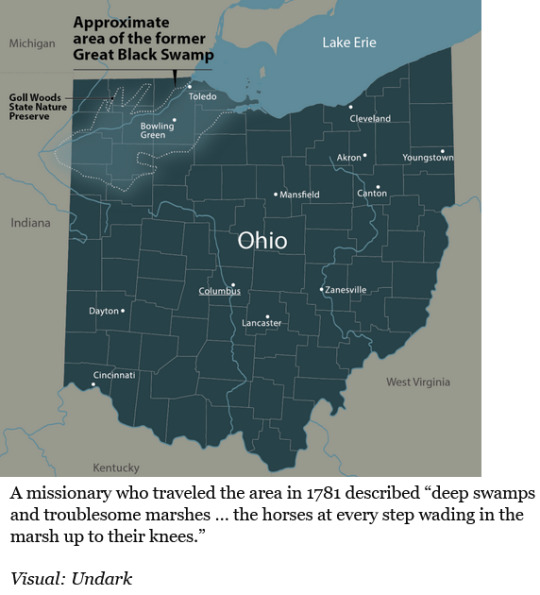
[S]oldiers recorded the striking bounty of the Black Swamp and Lake Erie’s southwestern shore. On an April morning in 1813, two hungry soldiers stationed at Fort Meigs, near present-day Toledo, walked down to the Maumee River. The clear waters swarmed with perch, muskellunge, sturgeon, and catfish. Plunging spears into the water at random, they caught 67 fish in 30 minutes, often killing two or three with a single stroke. Every river mouth west of the Sandusky held dense beds of wild rice, where waterfowl settled to feed, then rose in flocks that darkened the sky. The rice stalks stood taller than a man’s head: to feed, ducks grabbed the stems with their feet and tugged the seed heads down to the water. [...]
In 1859, the Ohio General Assembly passed a law authorizing county commissioners to construct drainage ditches. Farmers benefiting from ditch construction shared the cost. The other Midwestern states also enacted laws authorizing drainage districts, enabling the construction of vast networks of ditches that drained great swathes of land — a mission that required investment and coordination, and could not have been accomplished by individual landowners.
Through the work of drainage districts, the Corn Belt states would lose more than 95 percent of their native wetlands. [...]
Some enterprising soul tested the abundant clay that lay a foot or two beneath the soil of the Black Swamp, and found that it made excellent tiles.
By 1880, more than 50 tile factories operated in northwest Ohio, and the Black Swamp was dismembered and used to feed an accelerating and diversifying cycle of human industry.
The great wetland trees — ash, elm, oak, sycamore — were felled and used to build houses, make furniture, and power the railroads that sprouted up across Ohio. In the 1860s, Ohio’s railways consumed one million cords of wood each year as fuel, and an unknown quantity for ties. The discovery of underdrainage created a growing demand for tile. All this drove an orgy of forest clearing and land draining which in the course of five decades, from 1870 to 1920, completely erased the Black Swamp. A wilderness went up in the smoke from railroad engines, and flowed in drainage ditches down to the Maumee and Sandusky, which began to run murky and lost their once-bountiful populations of fish.
Among the descendants of the settlers who conquered the Black Swamp, drainage is viewed as sacred, while wetland restoration borders on the profane. In terms of water quality, a prime place to create wetlands would be where they intercept the flow of polluted water in farm ditches. That could cause water to back up and flood the fields, however, and it is forbidden under Ohio’s ditch laws, which have changed little since 1859.

-------
All text, images, and captions published by: Sharon Levy. “Learning to Love the Great Black Swamp.” Undark. 31 March 2017. [Bold emphasis and some paragraph breaks added by me.]
2K notes
·
View notes
Photo


She-was-my-first submitted this beautiful 1912 Craftsman bungalow in Maumee, Ohio. 5bd. 4ba., $388K.



The wood columns, built-ins, etc. are all in the craftsman style, but even though the fireplace is gorgeous, it’s clearly not original to the more sleek Craftsman style. I’m sure that the owners added the ornate marble mantle. The plain white mantle behind it is more than likely the original that they covered over with a white façade.


Here’s an additional sitting room that I suspect is the original dining room, but functions better this way for the current owners.

This room is perfect for an office, and they’ve set up a small desk to demonstrate that.

The dinette had a nice corner cabinet and counter. This would be the everyday dining space.



I have a thing for knotty pine cabinets. Look at the size of that drainboard sink. Amazing. Love the original tiled floor. Isn’t that cute how they have vintage step stools for seating.

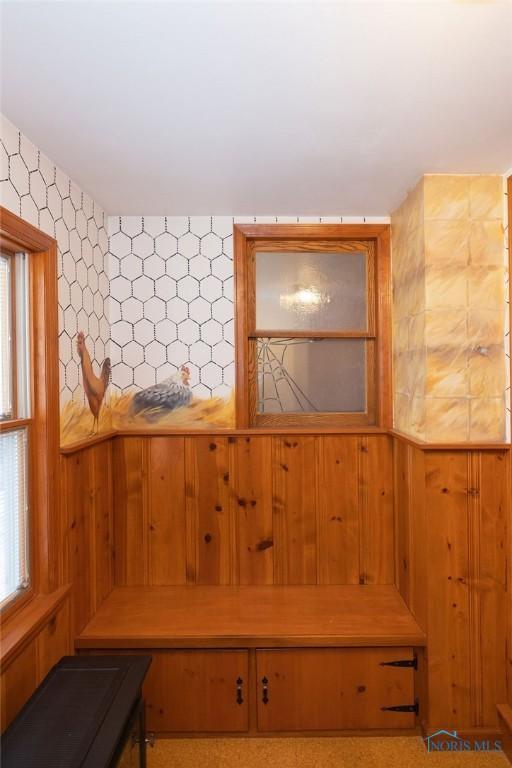
Isn’t this an adorable little mudroom area?


I don’t know what this area is, it looks like some sort of a central hall, but it’s a very large space with lots of possibilities. Beautiful wainscoting and built-ins, too.
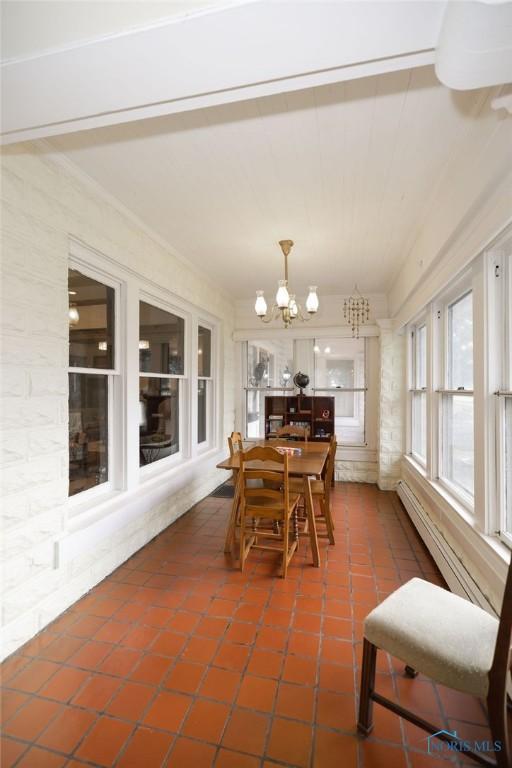
This is very nice, an enclosed porch.


This room opens to a lovely sunroom.

Notice the stone pillars painted white.


Here’s a stunning vintage en-suite with original tile and a gorgeous stained glass window.



The other 3 bds. are quite large with room for desks and comfortable seating.


The 5th bd. is on the upper floor.

Plus there’s another bath up here.

Look at the cute sink down here. Some people like to shave in the basement.

And, here we have a little rec room with a stone fireplace.

What cool wine cellar.

This lovely home is situated on .57 acre.
https://www.movoto.com/maumee-oh/1503-river-rd-maumee-oh-43537/pid_0lgf4gqtkh/
#craftsman bungalow#craftsman architecture#houses#house tours#home tour#old house dreams#submissions
108 notes
·
View notes
Text

a 6-month-old lake sturgeon is ready to be released in the maumee river in northwest ohio.
18 notes
·
View notes
Text
the maumee river is everything to me btw.
4 notes
·
View notes
Text

Sunset on the Maumee River by Jeremy Schneider
4 notes
·
View notes
Text
I had to go to Michigan today for Business Reasons, and my wife drove me because my car is still being fixed for an issue under warranty. I was able to enjoy more of the trip as a passenger and smiled to see signs for Frenchtown (Charter Township)—just like in the War of 1812!
I can't believe how close I am to River Raisin National Battlefield!!! This is even more exciting news than the fact that the same town also has approximately one million recreational marijuana dispensaries. (Yes Michigan, I have seen the 'Welcome Oh-HIGH-oans!' billboard).
It was a very scenic drive, crossing over the land divided by huge rivers in the vicinity of the Lost Pennisula, and we went over Glass City Skyway bridge, crossing the Maumee River with the museum ships of the National Museum of the Great Lakes moored below.
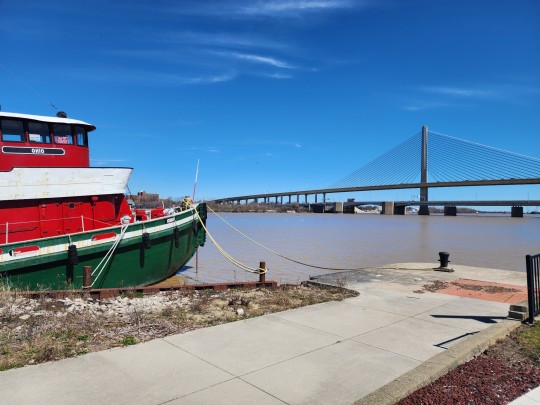
Here it is from the perspective of museum tug Ohio!
#shaun talks#maumee river#war of 1812#i can't wait to visit the river raisin battlefield!#i am so so spoiled with war of 1812 historic sites nearby#marijuana mention#michigan mentioned#toledo
26 notes
·
View notes
Text
Things I heard in class at the Christian university I go to because it's the only affordable university near my home:
"My best friend was the guy who my girlfriend cheated on me with, but he's still my best friend🥰"
***
"I appreciate you haven't gendered me, you all have gendered me both ways today."
***
"Are you apologizing for having Canadian ancestry?"
"I think he just did."
***
"Sorry for the wait."
"You're gay- I MEAN YOU'RE OKAY!"
***
"Do we say you're fine? You're FIIIIIINE😉😎"
***
"I'm Canadian Sorry for the inconvenience of this issue."
***
"If someone trips over you then you have to punch them in the face so you have something to apologize for."
***
"The Maumee River."
"We're talking about Mommy."
***
And this was all in just two classes on a random Thursday.
#sam's thoughts#sam says stuff#sam's ranting#sam says shit#sam's club#sam's life#sam's gas can#sam's college fun times#college fun times with sam#explanation: i go to this university because i need to live at home and work but this is the closest and cheapest option for me#i promise im not christian like most of my classmates think#i added that it's a christian university because it makes some of these quotes so much funnier
3 notes
·
View notes
Photo

Coming Along
Seen in Toledo, Ohio.
#Toledo#Ohio#Glass City Metropark#Skyline#Urban#Downtown#River#Maumee River#Water#Park#Black and White#March#2023
0 notes
Text
Traffic Alert: Portion of East Wayne Street to be closed tomorrow
New Post has been published on https://aroundfortwayne.com/news/2022/09/05/traffic-alert-portion-of-east-wayne-street-to-be-closed-tomorrow/
Traffic Alert: Portion of East Wayne Street to be closed tomorrow

A section of East Wayne Street between Glasgow Avenue and South Anthony Boulevard will close on Tuesday, September 6, 2022, at 7:30 a.m.
#Anthony Boulevard#CSO Combined Sewer Overflow#CSO Consent Decree#Fort Wayne Indiana#Glasgow Avenue#Maumee River#P. L. Brunner City of Fort Wayne Water Pollution Control Plant#Wayne Street
0 notes
Photo


Fort Meigs, Memorial Day weekend 2023.
Fort Meigs is the largest timber palisade fort built in North America.
Built on the banks of the Maumee River outside of present-day Perrysburg Ohio under the command of Gen. WIlliam Henry Harrison in February 1813 during the War of 1812. Following the defeat of Gen. WInchester’s forces at River Raisin/Frenchtown and the surrender of Gen. Hull at Detroit, US forces quickly needed to establish a fortified position and supply point for eventual operations into Canada and to recapture Detroit. Unsuccessfully besieged by British and native forces in 1813, the fort was dismantled after British forces departed the area, and was abandoned soon after the war. It was reconstructed in the 1960s on the same site featuring the extant original earthworks.
2 notes
·
View notes